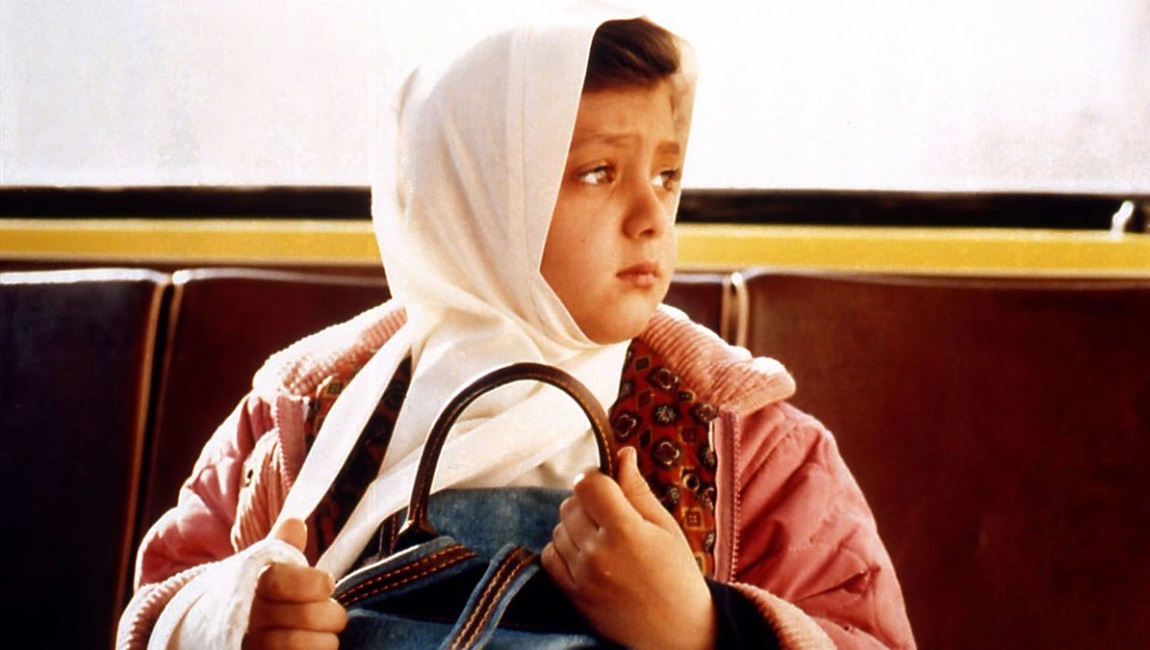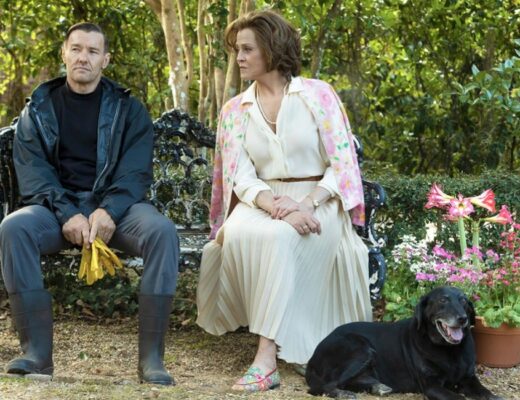In one of Jafar Panahi’s most recent short films, Hidden, the director meets a young girl with a beautiful voice, but her very traditional parents don’t allow her to sing; she’s hardly even allowed to be seen. The film’s central image is of the white sheet she’s hidden behind, and even though she does sing, just hearing her isn’t enough, and the camera seems desperate to burn through that makeshift curtain. In 2010, Panahi was banned by the Islamic Revolutionary Court from filmmaking for twenty years, but has found whatever way he can to keep working. His films now mostly consist of him playing a version of himself, and are often shot on his iPhone. It’s not surprising, then, that he would see filmmaking’s power over oppression in and of itself; even if it’s not clear what seeing behind the sheet would add, filming someone who isn’t allowed to be filmed is a good thing. But this optimism has not been consistent throughout his career — even after his official ban — and if we look back to his second feature, The Mirror, the director actually makes a powerful case against it.
In the opening scene, we see teachers directing their students across a busy Tehran road. All the children run across; they’ve been taught to fear it. Shot from the other side of the street, our frame is suddenly obscured entirely by cars driving, their horns wailing and their tires screeching. And so, when Mina (Mina Mohammad Khani, she too playing a version of herself) has to make her way home alone after her mother didn’t come to pick her up from school, she regards the road with trepidation. She jumps back at the sound of a horn and quickly latches onto a random adult to help her cross. From Mina’s level, the heads of the adults are cut off, imposing, formless. Even when she’s on a bus and can see them talking, they discuss things that are totally alien to her: aging, infidelity, money. But, more than just distant, adults are often even contemptful of the child — an old woman tells Mina to give her seat up to a pregnant woman, then chides that she took too long to do it.
Like many of Abbas Kiarostami’s films, who wrote Panahi’s first feature The White Balloon in 1995, The Mirror — filmed in 1997 — is shot at a child’s level in order to bring us into their inner lives, to show the richness, frustration, and fear that are often so less pronounced in the emotional world of an adult. Occasionally these worlds align, sometimes quite beautifully: when Mina sees a man and a woman making eyes at each other from across the bus and understands innately what’s going on, she smiles to herself. As lovely as this moment is, however, it plays on the idea of children as pure, and therefore more perceptive of natural things like love than those burdened by time and culture; it’s an idea imposed from the adult world, from the writer and director of the film. The fake cast Mina is told to wear to signify her vulnerability is one of her biggest objections, noted when she looks into the camera and declares “I’m not acting anymore!” Her whiny, pleading voice transforms suddenly into a defiant cry, a rejection of the melodrama imposed upon her. She marches off to what we find out is the same house she was going to within the film, but now when she crosses the road, she does so with careless, lived-in ease.
Later, Panahi would push the value of representation to its limits in 2003’s Crimson Gold by casting a paranoid schizophrenic, Hossein Emadeddin, to play a version of himself: a pizza delivery driver who is looked down upon by everyone “above” him. It’s easy to see why Panahi was drawn to such a unique screen presence, as Emadeddin is not just uninterested in, but actively contemptuous toward the camera’s gaze. He truly gives nothing to it, leaving everything to be inferred from afar. Out of Panahi’s oeuvre, Crimson Gold is possibly the most rigidly structured, each scene possessing a clear thematic and dramatic end that builds on top of the last to create a clear, definitive, enclosed image. The film begins at the end, with Emadeddin’s character committing suicide after his robbery of a jewelry store (whose staff sneered most viciously at him) goes wrong; every moment we see after can thus only point back toward this inevitability. The dark tone may well be reflective of the man at the film’s center, or more worryingly, it might also have been imposed on him. Either way, based on Emadeddin’s on-set paranoia and distress, it seems that no moment in which he gets to be seen, insofar as the camera was seeing him, was worth it.
When Mina rejects her role as actor, she takes off her cast and headscarf, as if both were equal symbols of her oppression. She isn’t so distinct from the women her character listens to on the bus, whose side of the bus she is only allowed onto. Though he portrays himself as quite pleasant on camera, Panahi is actually showing himself as enacting a patriarchal force and actively quelling Mina’s desire for independence. He makes the process of oppression clear, even if he doesn’t have the sharpest vision of its motivation — he only wants to finish the film, it seems, because he started it. The point, however, is that many people enforce these systems unconsciously. As the film moves further and further away from conventional narrative form, capturing only fragments of images and conversations, it becomes less about evoking the feeling of oppression than about articulating its means.
As Panahi continues to follow Mina in a car, The Mirror moves into a more realistic visual style. The real Mina is hard to capture; she’s often obscured, whether by buildings, by people, or by other cars. She rejects even this attempt to represent her, and the second she realizes the microphone is still on her, she tears it off. The film’s final image is of her closing the door on us, on the camera, as the final score of the football match we’ve been hearing about all throughout the film is announced: on both counts, it’s a big win for Iran. But this is complicated by Mina’s understanding of her rebellious instincts. When she talks to the actress who plays the old woman, she doesn’t seem to comprehend the distinction between the film and reality; “but that’s my real life,” she says, when she’s asked about her lines. Maybe she’s rebelling against something more than the film, or maybe something less. When she’s in a cab with two people arguing about a woman’s role in the home, she only wants to get out. The driver can keep the change. If she is unburdened by culture, she is also unaware of it, as she isn’t interested in thinking in those terms and is therefore even more alienated.
When she says she doesn’t want her friends to see her as weak, it’s not as satisfying as her cries of simply not wanting to act, but it might be truer to the prickly nature of children. This is something Panahi has emphasized in contrast to Kiarostami’s 1987 Where Is The Friend’s House?, which follows an altruistic boy trying to bring his classmate’s homework to him so he won’t get expelled. The White Balloon, for instance, follows a girl who only wants a goldfish in much the same way a child wants a new toy. Again, the idea of a satisfying film comes into conflict with a clear and useful message. If Panahi can’t stick to such a radically anti-cinema message in The Mirror, he still goes remarkably far with it. If his commitment to the idea was inconsistent, it’s understandable, especially given that he’s been imprisoned yet again. When you have no weapon but the camera, what course is left to you but to have faith in it?
Part of Kicking the Canon – The Film Canon.







